 W
WIn sociology, anthropology, archaeology, history, philosophy and linguistics, structuralism is a general theory of culture and methodology that implies that elements of human culture must be understood by way of their relationship to a broader system. It works to uncover the structures that underlie all the things that humans do, think, perceive, and feel.
 W
WIn social theory and philosophy, antihumanism or anti-humanism is a theory that is critical of traditional humanism, traditional ideas about humanity and the human condition. Central to antihumanism is the view that philosophical anthropology and its concepts of "human nature", "man" or "humanity" should be rejected as historically relative, ideological or metaphysical.
 W
WStructuralism is a movement in architecture and urban planning that evolved around the middle of the 20th century. It was a reaction to Rationalism's (CIAM-Functionalism) perceived lifeless expression of urban planning that ignored the identity of the inhabitants and urban forms.
 W
WJacob Berend "Jaap" Bakema was a Dutch modernist architect, notable for design of public housing and involvement in the reconstruction of Rotterdam after the Second World War.
 W
WPiet Blom was a Dutch architect best known for his 'Kubuswoningen' built in Helmond in the mid-1970s and in Rotterdam in the early 1980s. He studied at the Amsterdam Academy of Building-Arts as a student of Aldo van Eyck.
 W
WCourse in General Linguistics is a book compiled by Charles Bally and Albert Sechehaye from notes on lectures given by Ferdinand de Saussure at the University of Geneva between 1906 and 1911. It was published in 1916, after Saussure's death, and is generally regarded as the starting point of structural linguistics, an approach to linguistics that flourished in Europe and the United States in the first half of the 20th century. One of Saussure's translators, Roy Harris, summarized Saussure's contribution to linguistics and the study of language in the following way:Language is no longer regarded as peripheral to our grasp of the world we live in, but as central to it. Words are not mere vocal labels or communicational adjuncts superimposed upon an already given order of things. They are collective products of social interaction, essential instruments through which human beings constitute and articulate their world. This typically twentieth-century view of language has profoundly influenced developments throughout the whole range of human sciences. It is particularly marked in linguistics, philosophy, psychology, sociology and anthropology".
 W
WGiancarlo De Carlo was an Italian architect.
 W
WDiscourse, Figure is a 1971 book by the French philosopher Jean-François Lyotard. The philosopher Alan D. Schrift described the book as Lyotard's first major work. According to the philosopher Iain Hamilton Grant, Lyotard regarded it as one of his key works, alongside Libidinal Economy (1974) and The Differend (1983).
 W
WJacques Ehrmann was a French literary theorist and a faculty member of the Yale University French Department from 1961 until his death in 1972.
 W
WElements of Semiology is a compendium-like text by French semiotician Roland Barthes, originally published under the title of "Éléments de Sémiologie" in the French review Communications. The English translation by Annette Lavers and Colin Smith has been published independently as a short book.
 W
WAldo van Eyck was an architect from the Netherlands. He was one of the most influential protagonists of the architectural movement Structuralism.
 W
WForeclosure is the English translation of a term that the French psychoanalyst Jacques Lacan introduced into psychoanalysis to identify a specific psychical cause for psychosis.
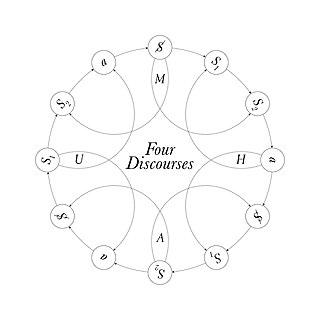 W
WFour discourses is a concept developed by French psychoanalyst Jacques Lacan. He argued that there were four fundamental types of discourse. He defined four discourses, which he called Master, University, Hysteric and Analyst, and suggested that these relate dynamically to one another.
 W
WThe functionalism–intentionalism debate is a historiographical debate about the origins of the Holocaust as well as most aspects of the Third Reich, such as foreign policy. The debate on the origins of the Holocaust centres on essentially two questions:Was there a master plan on the part of Adolf Hitler to launch the Holocaust? Intentionalists argue there was such a plan, while functionalists argue there was not. Did the initiative for the Holocaust come from above with orders from Adolf Hitler or from below within the ranks of the German bureaucracy? Although neither side disputes the reality of the Holocaust, nor is there serious dispute over the premise that Hitler was personally responsible for encouraging the anti-Semitism that allowed the Holocaust to take place, intentionalists argue the initiative came from above, while functionalists contend it came from lower ranks within the bureaucracy.
 W
WIn critical theory, sociology, and psychoanalysis, the gaze, in the philosophical and figurative sense, is an individual's awareness and perception of other individuals, other groups, or oneself. The concept and the social applications of the gaze have been defined and explained by existentialist and phenomenologist philosophers. Jean-Paul Sartre described the gaze in Being and Nothingness (1943). Michel Foucault, in Discipline and Punish: The Birth of the Prison (1975), developed the concept of the gaze to illustrate the dynamics of socio-political power relations and the social dynamics of society's mechanisms of discipline. Jacques Derrida, in The Animal that Therefore I Am (1997), elaborated upon the inter-species relations that exist among human beings and other animals, which are established by way of the gaze.
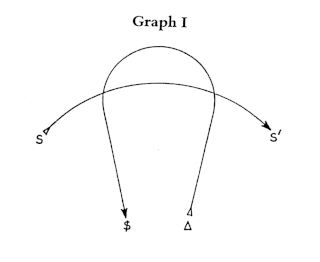 W
WThe graph of desire is a conceptual tool from the psychoanalytic theory of Jacques Lacan.
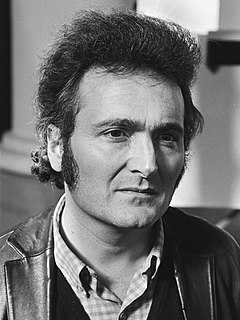 W
WHerman Hertzberger is one of the most famous Dutch architects, professor emeritus and the last Dutch architect to receive the prestigious Royal Gold Medal. Hertzberger is one of the oldest active Dutch architects.
 W
WThe Imaginary is one of three terms in the psychoanalytic perspective of Jacques Lacan, along with the Symbolic and the Real. Each of the three terms emerged gradually over time, undergoing an evolution in Lacan's own development of thought. "Of these three terms, the 'imaginary' was the first to appear, well before the Rome Report of 1953…[when the] notion of the 'symbolic' came to the forefront." Indeed, looking back at his intellectual development from the vantage point of the 1970s, Lacan epitomised it as follows:"I began with the Imaginary, I then had to chew on the story of the Symbolic ... and I finished by putting out for you this famous Real."
 W
WLucien Kroll is a Belgian architect known for his projects involving participation by the future inhabitants of the buildings. His most famous work is the Medical Faculty Housing at the University of Leuven, Belgium, from 1970–76. These buildings "aroused widespread controversy in the early 1970s, their fragmented and improvisational appearance— the result of a deliberate participatory design process— in stark contrast to the adjacent massive and repetitive hospital, the embodiment of a centralized bureaucracy."
 W
WFrom 1952 to 1980 French psychoanalyst and psychiatrist Jacques Lacan gave an annual seminar in Paris. The Books of the Seminar are edited by Jacques-Alain Miller.
 W
WLacanianism is the study of, and development of, the ideas and theories of the dissident French psychoanalyst Jacques Lacan. Beginning as a commentary on the writings of Freud, Lacanianism developed into a new psychoanalytic theory of humankind, and spawned a worldwide movement of its own.
 W
WThe mirror stage is a concept in the psychoanalytic theory of Jacques Lacan. The mirror stage is based on the belief that infants recognize themselves in a mirror (literal) or other symbolic contraption which induces apperception from the age of about six months.
 W
WMythologies is a 1957 book by Roland Barthes. It is a collection of essays taken from Les Lettres nouvelles, examining the tendency of contemporary social value systems to create modern myths. Barthes also looks at the semiology of the process of myth creation, updating Ferdinand de Saussure's system of sign analysis by adding a second level where signs are elevated to the level of myth.
 W
WMoshe Safdie is an architect, urban planner, educator, theorist, and author who claims Israeli, Canadian and American citizenship. Over a 50-year career, Safdie has explored the essential principles of socially responsible design through a comprehensive and humane design philosophy. Safdie is an important architect of the second half of the twentieth and early twenty-first century because of his multiculturalism, commitment to geographic, social and cultural elements that define a place, and constant search for typological and technological innovation. Safdie's projects include cultural, educational, and civic institutions; neighborhoods and public parks; housing; mixed-use urban centers; airports; and master plans for both existing communities and entirely new cities. Safdie has had projects in North and South America, the Middle East, and throughout Asia. He is most identified with designing Marina Bay Sands and Jewel Changi Airport, as well as his debut project, Habitat 67, originally conceived as his thesis at McGill University. This led to his international career. Safdie is considered a thought leader and his exemplary projects have inspired generations of architects and architecture.
 W
WThe Savage Mind is a 1962 work of structural anthropology by the anthropologist Claude Lévi-Strauss.
 W
WNaomi Schor was an American literary critic and theorist. A pioneer of feminist theory for her generation, she is regarded as one of the foremost scholars of French literature and critical theory of her time. Naomi's younger sister is the artist and writer Mira Schor.
 W
WAlf Sommerfelt, was a Norwegian linguist and the first professor of linguistics in Norway, working at the University of Oslo from 1931 to 1962.
 W
WIn sociology and criminology, strain theory states that social structures within society may pressure citizens to commit crime. Following on the work of Émile Durkheim, strain theories have been advanced by Robert King Merton (1938), Albert K. Cohen (1955), Richard Cloward, Lloyd Ohlin (1960), Neil Smelser (1963), Robert Agnew (1992), Steven Messner, Richard Rosenfeld (1994) and Jie Zhang (2012).
 W
WCertain works of structural engineering design are also works of structural art. Such works can be classified as structural art when they attain excellence in the three areas of efficiency, economy, and elegance, as defined by Prof. David P. Billington of Princeton University. A key part of the concept of structural art is that the structural engineer making the design must exercise his or her creativity and playfulness to create an elegant structure within the constraints imposed by engineering requirements. These constraints include the safety and serviceability of the structure. Therefore, a structure cannot be a successful work of structural art without also being a successful work of structural engineering design, yet many works of structural engineering design that are safe and serviceable do not rise to the level of structural art because they fail to be economical, efficient, or elegant. Structural art is a topic of active scholarly research at several universities in the United States, including Princeton University, Tufts University, Bucknell University, University of Massachusetts Amherst, the Massachusetts Institute of Technology, and Roger Williams University, and in other parts of the world such as Spain and Germany. While structural artists often collaborate with architects, the discipline of structural art is based upon engineering rather than architectural design. A recent summary about this topic can be found in a review paper
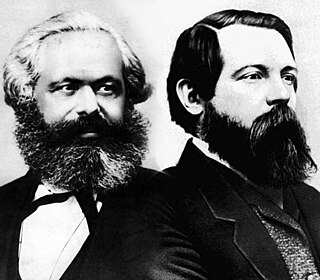 W
WStructural Marxism is an approach to Marxist philosophy based on structuralism, primarily associated with the work of the French philosopher Louis Althusser and his students. It was influential in France during the 1960s and 1970s, and also came to influence philosophers, political theorists and sociologists outside France during the 1970s. Other proponents of structural Marxism were the sociologist Nicos Poulantzas and the anthropologist Maurice Godelier. Many of Althusser's students broke with structural Marxism in the late 1960s and 1970s.
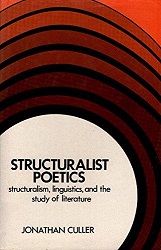 W
WStructuralist Poetics: Structuralism, Linguistics and the Study of Literature is a 1975 book of critical literary theory by the critic Jonathan Culler. First published by Routledge & Kegan Paul, it won the James Russell Lowell Prize from the Modern Language Association of America in 1976 for an outstanding book of criticism. It is hailed as the "most thorough and influential account" in the English-speaking world of the school of structuralism as a critical theory of literature.
 W
WEliseo Verón was an Argentine sociologist, anthropologist and semiotician, and professor of communication sciences at Universidad de San Andrés. His work is known mainly in Spanish and French-speaking countries.